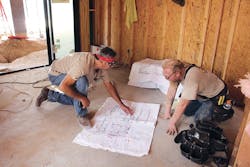Who isn’t exhausted after eight hours on the job, especially in such a physically demanding industry? Research across a number of professions has shown time and again that productivity and accuracy decrease when employees aren’t given sufficient time off to recharge. Yet the standard practice continues to be asking staff to work overtime to finish a job or catch up on paperwork.
Not at NewDay. It’s been part of our company culture for more than three decades to not allow overtime. It lets our employees be 100% “on” when they’re at work, and 100% “off” when they’re not, which translates into better work and a better company in the long run.
The following are a few tips for changing the overtime policy at your company.
Create a Game Plan
Change is hard. If you’re looking to eliminate overtime, you will need a strategy. Break it down into manageable steps. At NewDay, we don’t work overtime or weekends. The day before a holiday, employees work four hours but are paid for eight. That system has been in place—and working well—since the ‘70s.
Try implementing one thing at a time: Start with not allowing overtime one or two days a week. And keep the lines of communication open: If you don’t know what’s working, you can’t know what to change.
Start Each Week with Tangible Goals
Make explicit what you’d like your crew to accomplish not only by the end of the day, but by the end of the week as well. This way, progress happens intentionally, and everyone knows the expectations and can create a plan to get that done within regular working hours.
Make it clear what you expect to be accomplished by the end of the day and the week so employes can plan their time and work intentionally.
Knowing what’s expected by week’s end also helps keep employees aware of where they stand if they’re looking for some time off. If they can accomplish what we’ve set out as goals ahead of schedule, then I don’t have a problem when they ask to take off a few hours early to pick up the kids or catch an early game.
Don’t Waver
Clients will push you to bend your no-overtime policy. I’ve had clients offer to pay whatever the extra would be for my crew to work overtime, and I tell them, point blank, that it’s not going to happen.
Let them know that if you ask your crew to work overtime, workmanship will go down, and you won’t come back in on your own dime to do pick-up work. Overtime is too costly—physically, mentally, and monetarily.
About the Author

Louis Krokover
Louis Krokover is president and CEO of NewDay Development in Los Angeles, Calif.
